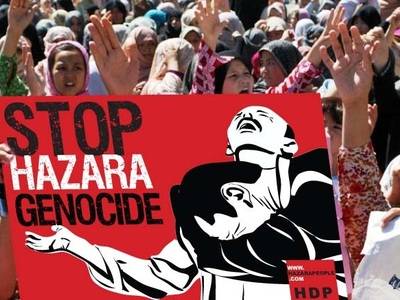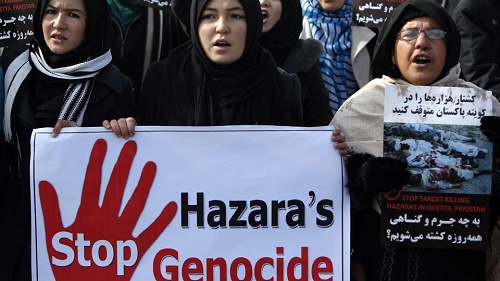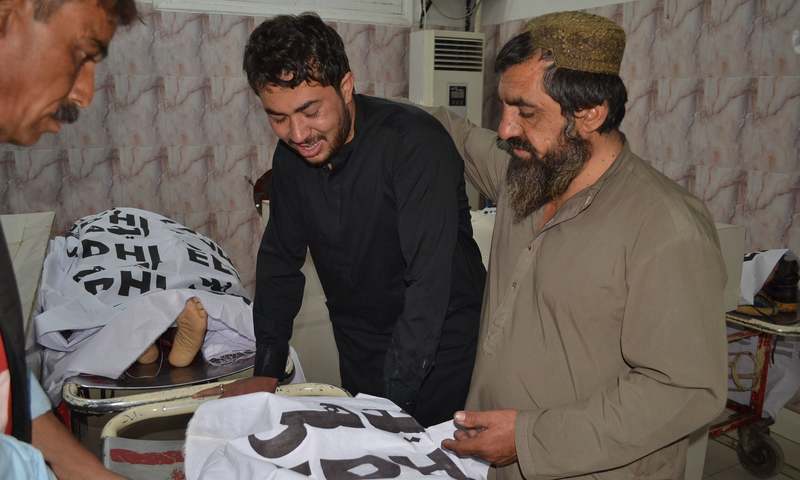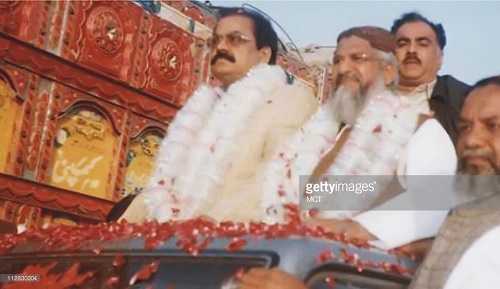
Who are Hazaras and why do they live in Pakistan?
Around 900,000 Hazaras live in Pakistan, a vast majority of whom inhabit Balochistan, primarily in and around Quetta. Genetically rooted in the Uzbek and Turkic ancestry, the community’s presence in what is now known in Pakistan was recorded around the First Anglo-Afghan War circa 1839-1842 when some Hazaras joined British Officer Major George Broadfoot’s miners and sappers contingent.
The Mughals conflated the Hazarajat with Kafiristan, still a province in Afghanistan, named as such owing to the practice of ancient Hinduism by its inhabitants.
Members of the community moved to Quetta in a bid to escape persecution in the region that is now the state of Afghanistan.
History of Hazara persecution since the time of Babur
The persecution of the Hazara community dates all the way back to the 16th century, and the reign of Mughal Emperor Babur in the region. And the cause behind this targeting of the community, which by the late 19th century had become full-blown ethnic cleansing, is underscored by Emperor Babur in his memoirs Baburnama.
“In the western mountains are the Hazara and Nikdirl tribes, some of whom speak the Mughul tongue. In the north-eastern mountains are the places of the kafirs, such as Kitur and Gibrik. To the south are the places of the Afghan tribes.”
The Mughals conflated the Hazarajat with Kafiristan, still a province in Afghanistan, named as such owing to the practice of ancient Hinduism by its inhabitants. This facilitated the othering, and in turn marginalisation, of the Hazaras owing to their Twelver Shia religious identity, and Mongol heritage.
Half a millennium later, it is the same ethno-religious combination that is being used to fan genocide of the Hazaras.
Why were Hazaras ousted from Afghanistan?
After Emir of Afghanistan Shah Abdur Rehman Khan expelled entire regions of the Hazaras at the turn of the 20th century, following the Second Anglo-Afghan War, the community found safe refuge in Balochistan for most of the next century – until radical Islamism hunted the Hazaras down again.
Also watch:
Jalila Haider is leading a sit-in against the genocide of Hazara people going on in Quetta for decades now. But this isn't the community's first protest sit-in. It has almost become a norm for them. Their people get killed and they stage protests. #Replugpic.twitter.com/U1dzkuEHmv
— NayaDaur (@nayadaurpk) May 1, 2018
LeJ’s alliance with al-Qaeda proves death knell for Hazara community
With al-Qaeda and Afghan Taliban finding safe havens in Quetta post 9/11 and Lashkar-e-Jhangvi drawing closer to the former after its founder Riaz Basra was killed, the city became hub of anti-Shia jihadist groups – which had been allowed to mushroom in the 1980s, under Gen Zia-ul-Haq’s Islamisation and proliferation of jihad.
Easily distinguishable owing to their physical features, the local Hazaras became convenient targets for the LeJ and Sipah-e-Sahaba, now masquerading as Ahl-e-Sunnat Wal Jamaat (ASWJ) – and more recently the Pakistan Rah-e-Haq Party (PRHP).
The plight of the Hazaras
While the first attack since the turn of the century targeting the Hazaras in Quetta can be traced to 2001 Poodgali Chowk, the massacre has escalated over the past decade.
Over 500 Hazaras have been killed in terror attacks and over 600 injured in Quetta over the past five years. These include the grotesque January and February 2013 bombings, with the families of the victims having to protest with unburied coffins to generate awareness of their plight.

Five years later, members of the community have had to register another protest – a hunger strike at the end of last month, following a renewed spate of violence against the Hazaras. While the protest was called off after reassurances from the Army Chief Gen Qamar Javed Bajwa and Interior Minister Ahsan Iqbal – who touts the attacks as ‘foreign-funded’ and was himself targeted by a takfiri jihadist in a failed assassination bid on Sunday.
How state is facilitating Hazara genocide
However, it is by denying the historical roots of the ethnic cleansing of the Hazara and the radical jihadist ideology that apostatises the Shia and calls for their genocide, that the state is facilitating the massacre of its Shia Hazara.
Another hint can be found in the change in LeJ’s modus operandi, which is now incorporating hit and run roadside attacks, which have been used to target the local Christians as well.
This denialism goes as far as denying the presence in Quetta of the Islamic State (ISIS), whose alliance with Laskhar-e-Jhangvi Al-Alami, is directly responsible for the resurgence in the killings of the Shia Hazara in Quetta.
LeJ terrorists’ new modus operandi in Balochistan, and the role of ISIS
Another hint – should the security agencies seek one – can be found in the change in LeJ’s modus operandi, which is now incorporating hit and run roadside attacks, which have been used to target the local Christians as well.
The LeJ foot soldiers are working in tandem under the ISIS umbrella, resulting in similar attacks targeting the religious minorities, being claimed by both groups.

Denying ISIS presence in Balochistan, which has been substantiated by a Pakistan Institute for Peace Studies (PIPS) security report, because ISIS core isn’t directly functional in the country is resulting in the ostensible underestimation of the threat, which has jeopardized the security situation to a point where the Army Chief himself has to meet the citizens to reassure them of their safety.
Security agencies and politicians both to blame for LeJ operating with total impunity
Denial, of course, isn’t the only issue at hand – there’s the much gorier complicity. The security agencies’ relocation of the Taliban and other strategic assets to the region, and the proliferation of anti-Shia madrassas under military dictator Zia-ul-Haq notwithstanding, it is the political alliances that the likes of LeJ and SSP have formed in Punjab that gave them the impetus to continue spilling the blood of Hazaras.

Punjab law minister Rana Sanaullah, left, and Ahmed Ludhianvi ride in a rose-covered car during campaigns in Jhang, a town in Pakistan's Punjab heartland that remains largely untouched, despite the U.S.-backed war against militants elsewhere in the country. (MCT)
The ruling PML-N relied on political alliances with the LeJ and ASWJ to maintain its stranglehold over Punjab and in turn bag the 2013 elections. And in 2016, a year after the National Action Plan was implemented, Masroor Jhangvi – son of Sipah-e-Sahaba founder Haq Nawaz Jhangvi, who has endorsed Shia genocide in multiple speeches – not only contested a by-election in Jhang, but also won.
It’s safe to say that with the PML-N under the cosh, and the ISIS penetrating the heavily garrisoned city of Quetta under the LeJ garb, both the civil and military leaderships are more interested in the political weightage of jihadist groups perpetuating genocide – not their victims currently under siege in a provincial capital.
